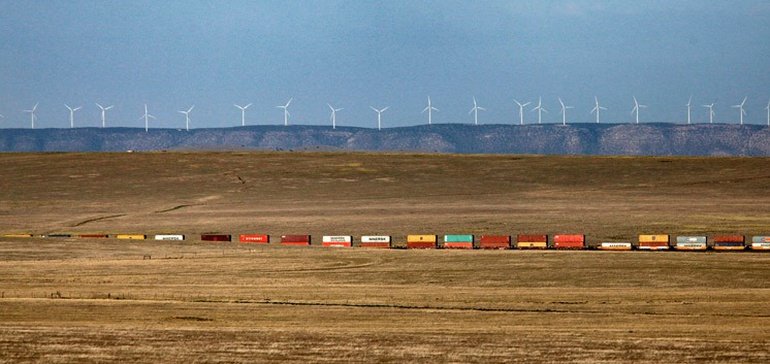Permission granted by Avangrid
Jason Plautz
Source: www.utilitydive.com, May 2021
Dive Brief:
- Even as the Biden administration has centered climate change throughout the government and proposed billions in clean energy investments, state regulators said at a panel Tuesday they are still best equipped to handle emissions reductions at home.
- “States rights are important … and states like New Mexico need to keep their own rules in place,” said Sandra Ely, director of the New Mexico Environment Department, on a panel at the Colorado Energy Research Collaboratory’s annual 21st Century Energy Transition Symposium. That is especially true given the policy swings between the Trump and Biden administrations, Ely added.
- The best role for the federal government in promoting clean energy and transportation is funding, said Brad Crowell, director of the Nevada Department of Conservation and Natural Resources.
Dive Insight:
Tuesday’s panel comprised environmental officials from Colorado, New Mexico, Nevada and Oregon. All four states have set their own clean energy targets and greenhouse gas reduction goals, although most officials also said they are not on pace to meet them. Current projections, for example, show that Nevada could fall 4% short of its goal to reduce greenhouse gas emissions 28% of 2005 levels by 2025 and could be almost 20% short of its 45% reduction by 2030 target. Oregon, likewise, is off pace to reduce emissions 75% of 1990 levels by 2050.
“It’s not a surprise. While we’re making progress and put a lot of clean energy and climate rules to work in Oregon, we know we still need to do more,” said Kristen Sheeran, climate and energy advisor to Gov. Kate Brown. Sheeran said some of the missed progress has to do with transportation emissions, while the electricity sector has accounted for substantial emission cuts.
Biden’s infrastructure plan includes a clean electricity standard — which would set the country on a path to 100% emissions-free electricity by 2035 — as well as $100 billion for the power grid and $174 billion in electric vehicle spending. That funding, state officials said, could help them put more teeth and technology behind their clean energy targets, since many states were hit hard by the economic slowdown from the COVID-19 pandemic.
“The [federal] money is money we just don’t have in Nevada, so our challenge is finding funding to do the things we need to do,” said Crowell.
Meanwhile, utilities say they’re moving ahead to meet state goals. In Colorado, for example, state energy office executive director Will Toor said that the six utilities that operate 99% of the state’s fossil fuel infrastructure have committed to at least an 80% emissions reduction by 2030, in line with Gov. Jared Polis’ goals.
Alice Jackson, president of Xcel Energy-Colorado, said in an earlier symposium keynote that the state’s targets and incentives have helped guide the utility’s own goal to reduce emissions just under 85% of 2005 levels by 2030. Under a plan submitted to the state, about 80% of Xcel’s energy at any time will be from renewable sources and all of the utility’s four remaining coal plants will be retired by 2040. Jackson said those numbers could go up even more with some additional support from government and industry, especially around battery storage.
“We need these technologies to come forward and come down in cost so we can make investments and ensure affordability,” Jackson said. “Yes, we could have done deeper carbon reductions, but the long-term cost impact … would have some implications for our customers.”

